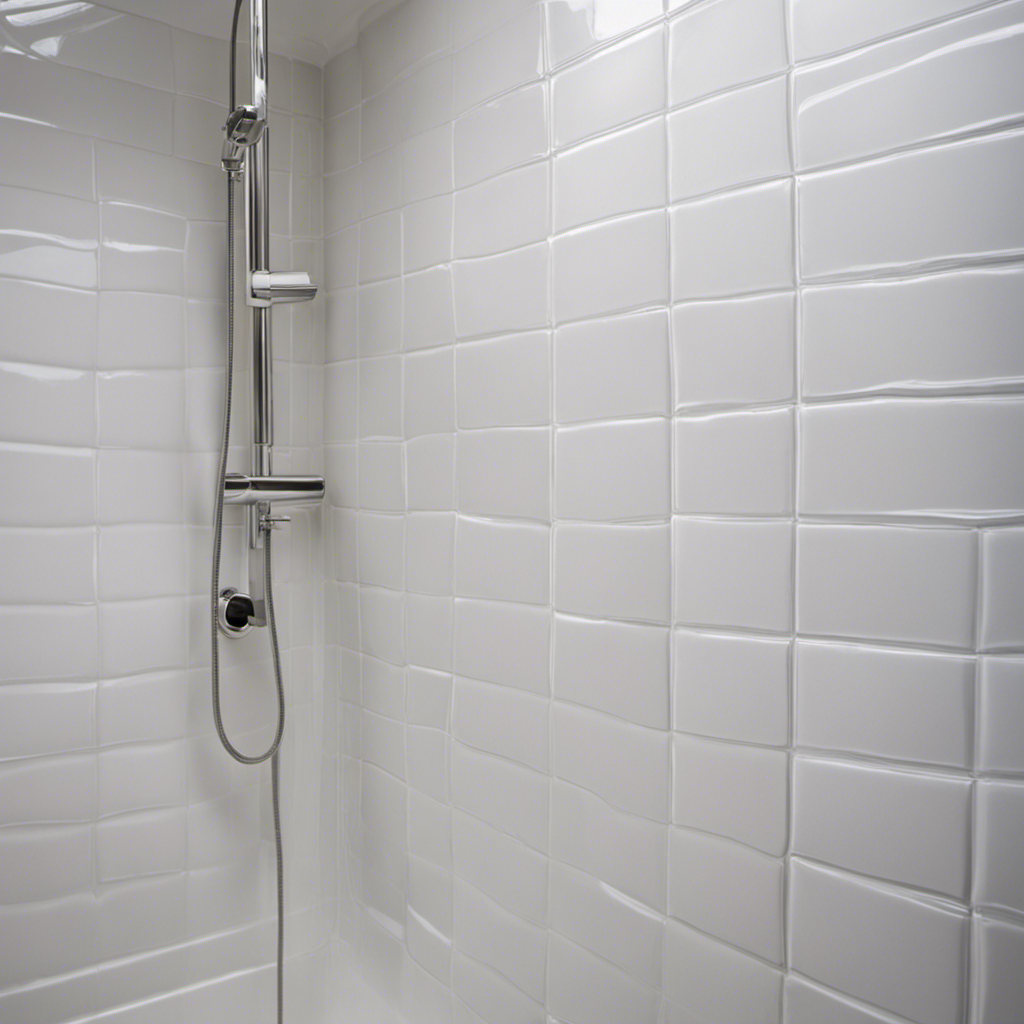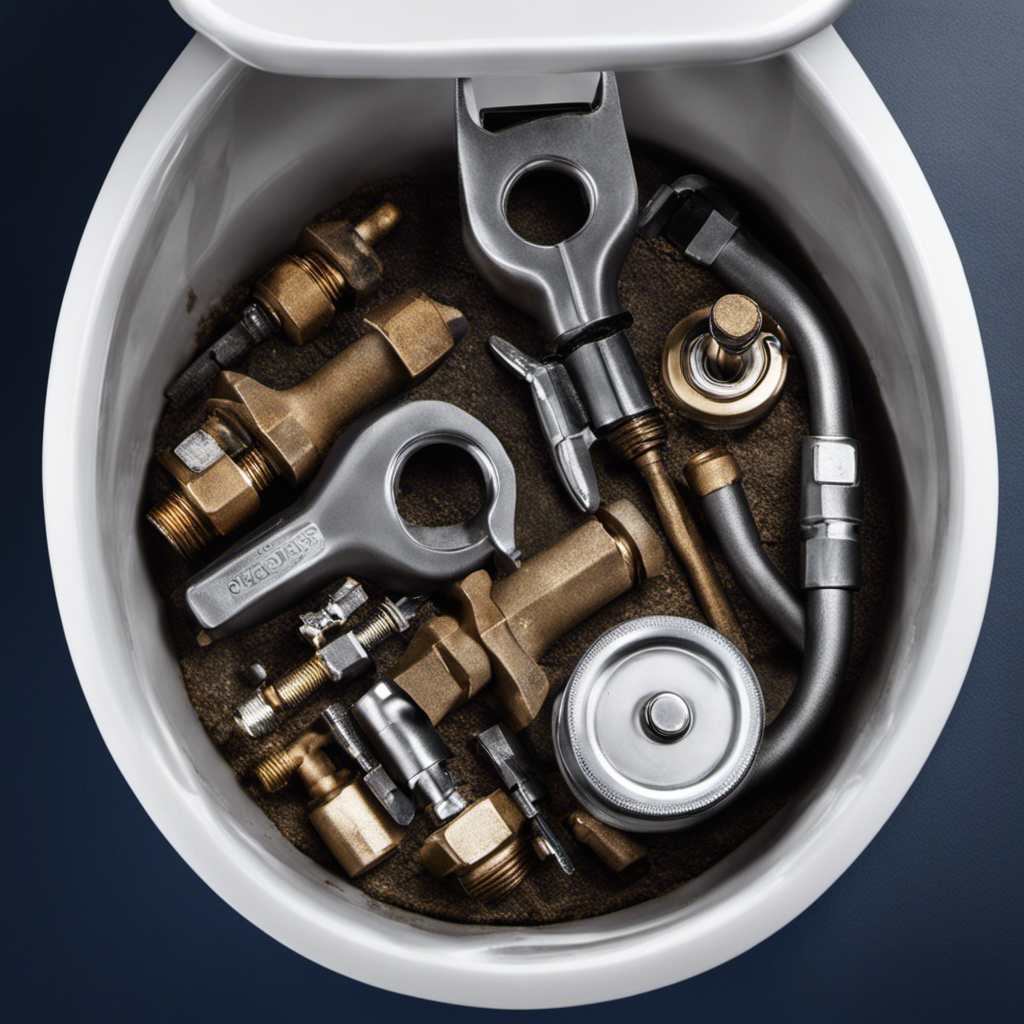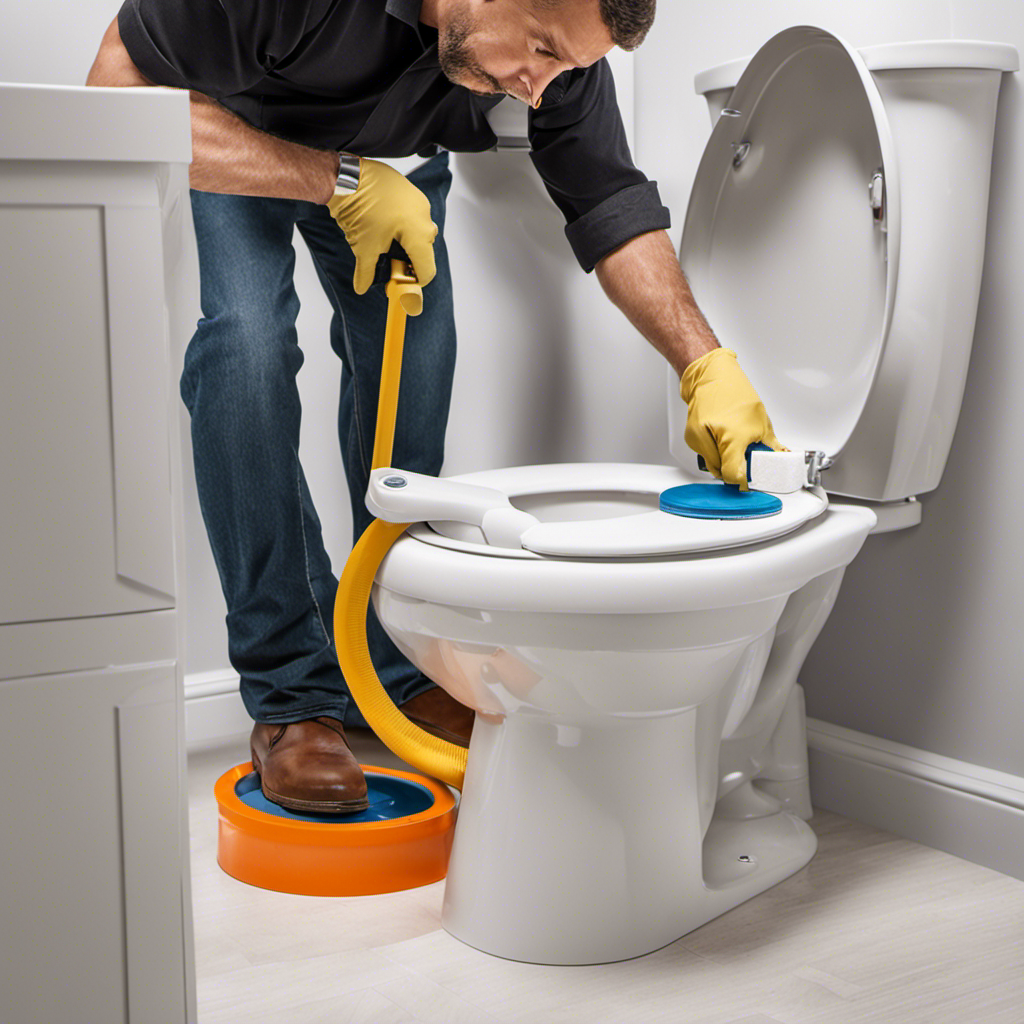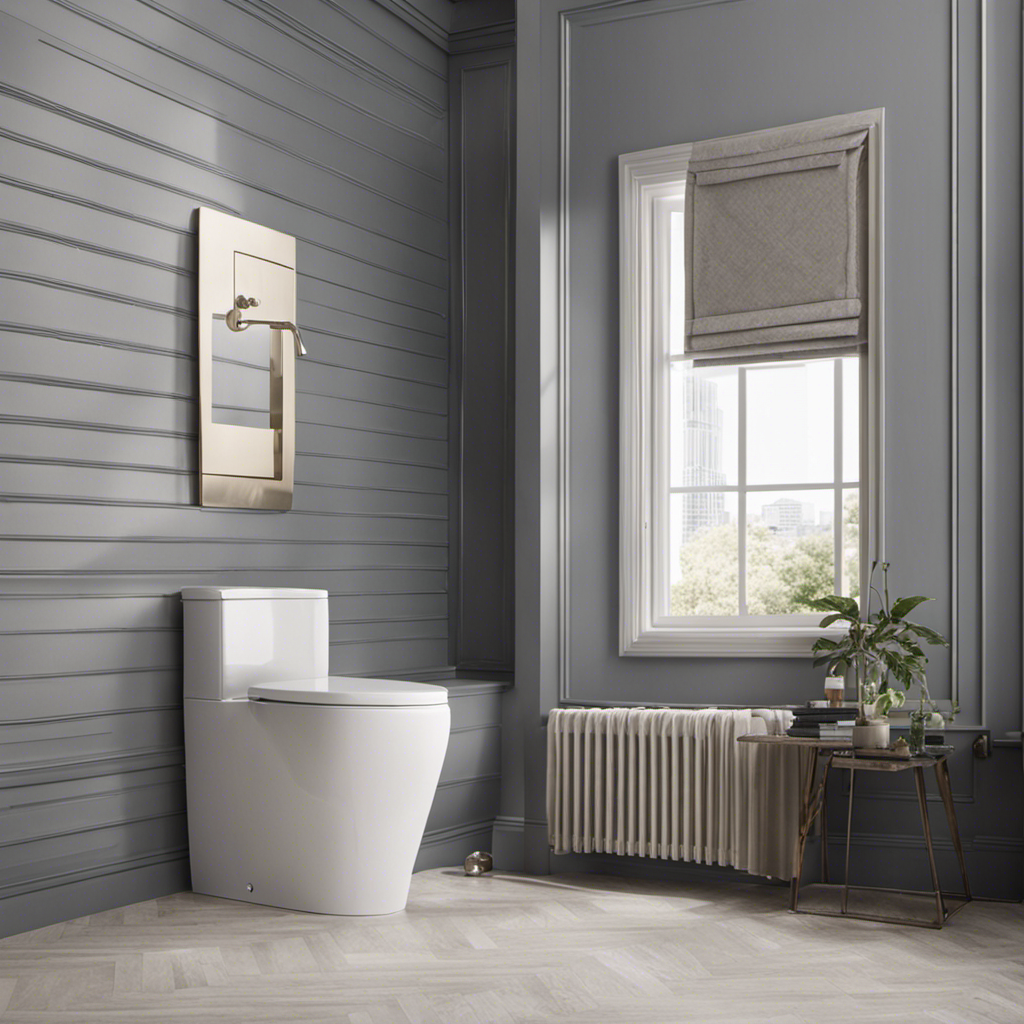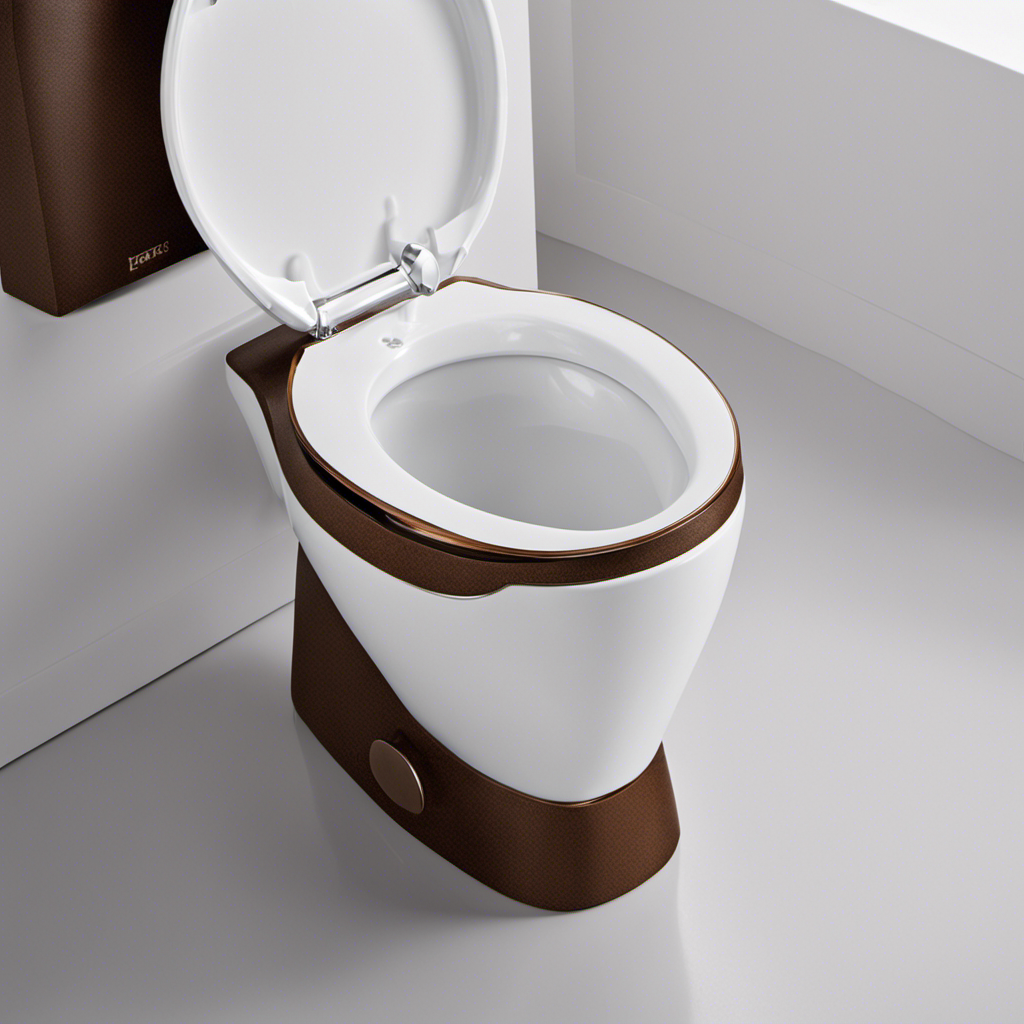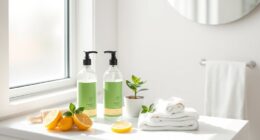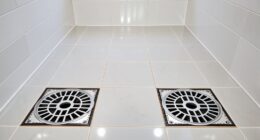Shower caulking can be a prime breeding ground for mold and mildew due to the moist environment. Mold spores easily spread and thrive in bathrooms with poor ventilation, while grime and soap scum on caulking provide nourishment for their growth. This not only poses health risks but also leaves an unsightly appearance.
The most common type of mold found on shower caulking is black mold, which can cause allergies and respiratory issues. Additionally, pink slime, a bacterium called Serratia marcescens, feeds on soap scum.
However, there are effective methods to remove mold from shower caulking, such as using bleach, vinegar, hydrogen peroxide, or baking soda. Furthermore, prevention tips, including proper ventilation, drying off shower walls, wiping down caulking with vinegar, and using mold-blocking cleaning solutions, can help avoid mold growth on caulking.
Key Takeaways
- Mold and mildew thrive in moist environments, such as showers with poor ventilation and surfaces covered in grime and soap scum.
- Mold on shower caulking, particularly black mold and pink slime, can pose health risks and cause allergies and respiratory issues, especially for individuals with pre-existing conditions.
- Promptly addressing mold on shower caulking is essential to prevent further growth and potential health risks. Methods to remove mold include using bleach, vinegar, hydrogen peroxide, or a baking soda paste.
- To prevent mold growth on caulk, keep the bathroom well-ventilated, dry off shower surfaces, regularly clean caulk with vinegar, consider mold-blocking cleaning solutions, and use high-quality silicone caulking designed for showers.
Causes of Mold on Shower Caulking
Mold and mildew thrive on shower caulking due to the combination of moisture, poor ventilation, and the presence of grime and soap scum.
The prevalence of mold on shower caulking is a common issue in bathrooms. Moisture plays a significant role in the growth of mold on caulking, as it provides the ideal environment for spores to multiply and thrive. When moisture accumulates on the caulk, it creates a damp surface where mold can easily take hold and spread.
Additionally, poor ventilation in bathrooms exacerbates the problem by trapping the moisture and preventing proper airflow. The presence of grime and soap scum further contributes to the growth of mold, as they provide a food source for the spores.
It is important to address these factors to prevent the prevalence of mold on shower caulking and maintain a clean and healthy bathroom environment.
Health Risks Associated With Mold on Shower Caulking
Exposure to mold on shower caulking can lead to allergies and respiratory issues, especially for individuals with pre-existing health conditions. Here are the health risks associated with mold on shower caulking:
-
Allergic Reactions: Mold contains allergens that can trigger allergic reactions in susceptible individuals. Symptoms may include sneezing, coughing, itching, and skin rashes.
-
Respiratory Issues: Prolonged exposure to mold spores can irritate the respiratory system, leading to symptoms such as wheezing, difficulty breathing, and chest tightness. Individuals with asthma or other respiratory conditions may experience worsened symptoms.
-
Long-Term Effects: Continual exposure to mold on shower caulking can have long-term effects on health. It may contribute to the development or worsening of respiratory conditions and allergies over time.
-
Compromised Immune System: Individuals with weakened immune systems, such as those undergoing chemotherapy or with HIV/AIDS, are at higher risk of developing severe respiratory infections when exposed to mold.
It’s crucial to address mold on shower caulking promptly to prevent these health issues.
Effective Methods to Remove Mold From Shower Caulking
Regular maintenance and thorough cleaning are essential for keeping shower caulking free from mold and ensuring a healthy environment.
To prevent mold on shower curtains, it is important to keep them dry and clean. After each shower, it is recommended to fully extend the curtain and leave it open to allow air circulation and prevent moisture buildup.
Common mistakes to avoid when removing mold from shower caulking include using abrasive cleaners that can damage the caulk and scrubbing too aggressively, which can cause the mold spores to spread.
Instead, opt for mild cleaning solutions like bleach, vinegar, hydrogen peroxide, or baking soda. Apply these solutions to the moldy areas, let them sit for a designated time, and then scrub gently with a toothbrush or sponge.
Rinse thoroughly and dry the caulk completely to inhibit further mold growth.
Using Bleach to Remove Mold From Shower Caulking
Bleach, when applied to the affected areas, can effectively eliminate mold from shower caulking and disinfect the surrounding area. Here are some pros and cons of using bleach for mold removal on shower caulking:
Pros:
- Bleach is a powerful disinfectant that kills a wide range of bacteria, viruses, and fungi.
- It is readily available and affordable.
- Bleach works quickly, providing immediate results.
- It can be easily applied using a spray bottle or sponge.
Cons:
- Bleach has a strong odor and can cause eye and respiratory irritation.
- It can damage certain surfaces, including fabrics, carpets, and colored grout.
- Bleach is toxic if ingested and can be harmful to pets and children.
- It may not be effective in removing deeply embedded mold stains.
Alternatives to bleach for removing mold from shower caulking include vinegar, hydrogen peroxide, and baking soda. These natural alternatives are less harsh and can be equally effective in tackling mold growth.
Using Vinegar to Remove Mold From Shower Caulking
Vinegar, a natural and affordable alternative, can be used to eliminate mold from shower caulking and disinfect the surrounding area. Using vinegar as a natural cleaning solution for mold on shower caulking is a safe and effective method. Vinegar contains acetic acid, which has antimicrobial properties that can kill and inhibit the growth of mold. To use vinegar, simply dilute it in a 1:1 mixture with water and spray it onto the affected areas. Let it sit for a few minutes before scrubbing with a toothbrush or sponge. Rinse with warm water to remove any residue.
Proper ventilation is also crucial in preventing mold growth on shower caulking. Moisture and lack of airflow create the perfect environment for mold to thrive. It is important to open windows, use fans, and leave the shower door and curtain open after use to promote air circulation and reduce moisture. Regularly wiping down shower caulking with vinegar can also help inhibit mold growth.
Prevention Tips to Avoid Mold Growth on Shower Caulking
Proper ventilation, regular drying of shower surfaces, and using mold-resistant caulking materials are essential in reducing the risk of mold growth on shower caulking. To prevent mold from returning, it is important to follow these prevention tips:
-
Importance of proper caulk maintenance: Regularly inspect and clean shower caulking to remove any build-up of grime or soap scum.
-
Improve bathroom ventilation: Open windows, use fans, and leave the door and shower curtain open after use to promote air circulation and reduce moisture.
-
Use natural alternatives to chemical mold removal: Consider using vinegar or apple cider vinegar, which have antimicrobial properties, to clean moldy caulking. These natural solutions are effective and have a less unpleasant smell compared to chemical cleaners.
-
Consider using mold-resistant caulking materials: Invest in high-quality silicone caulking specifically designed for showers, as it is more resistant to mold growth.
Frequently Asked Questions
How Long Does It Take for Mold to Grow on Shower Caulking?
Mold can start growing on shower caulking within 24 to 48 hours in the right conditions of moisture and lack of cleaning. Promptly addressing mold and regularly cleaning the caulk can prevent its growth.
Can Mold on Shower Caulking Cause Long-Term Health Problems?
Mold on shower caulking can cause long-term health problems and poses health risks. Prolonged exposure to mold can lead to respiratory issues and allergies, especially for individuals with pre-existing conditions.
Is It Safe to Use Bleach and Vinegar Together to Remove Mold From Shower Caulking?
Yes, it is safe to use bleach and vinegar together to remove mold from shower caulking. They are effective natural mold removers. However, do not mix bleach and vinegar directly as it can create toxic fumes.
What Should I Do if the Mold Keeps Coming Back on the Caulk After Cleaning?
If mold keeps returning on caulk after cleaning, ensure proper ventilation, dry surfaces, and regular cleaning. Consider using natural alternatives like apple cider vinegar. If the issue persists, consult professionals for severe mold infestations. Prevention tips are crucial.
Can I Use Regular Caulk in My Shower or Do I Need to Use a Specific Type for Mold Prevention?
Regular caulk can be used in showers, but specialized mold-resistant caulk is recommended for effective mold prevention. Regular caulk may deteriorate faster and require more frequent maintenance. Properly preparing the surface by removing old caulk and cleaning it thoroughly is essential for a successful caulking job.
Conclusion
In conclusion, removing mold from shower caulking is essential for maintaining a clean and healthy bathroom environment.
The article has provided effective methods such as using bleach, vinegar, hydrogen peroxide, and baking soda to eliminate mold from shower caulk.
Additionally, prevention tips such as proper ventilation, regular cleaning, and using mold-blocking cleaning solutions can help prevent mold growth in the first place.
By following these methods and tips, individuals can ensure a mold-free shower and minimize health risks associated with mold exposure.
So, why wait? Take action now to keep your shower caulking mold-free and your bathroom a safe haven.
